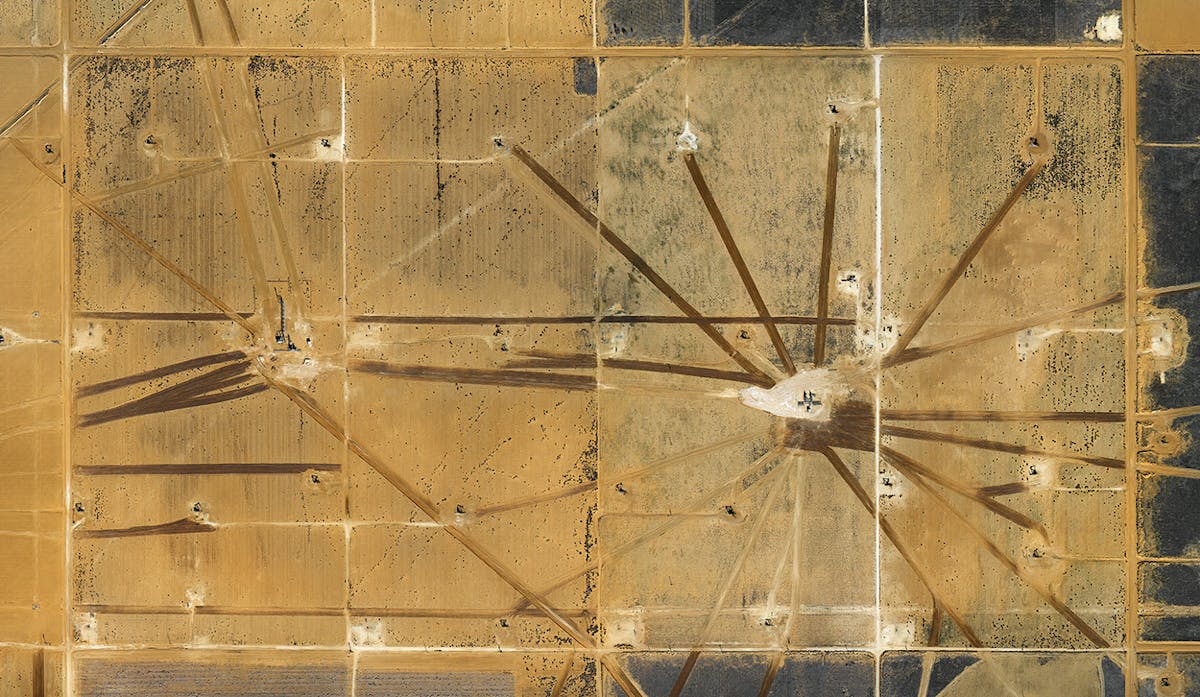The Holocene, our current geologic age, began over 11,700 years ago. Measured from the end of the Ice Age’s mass extinction, the Holocene includes the beginnings of agriculture, the domestication of animals, the establishment of the written word, and the rise of civilization. However, some scientists now argue the Holocene has come to an end: Welcome to the Anthropocene, a newly proposed geologic age defined by humanity’s irreversible impact on our 4.5-billion-year-old planet.


Our toll on the natural world might be most apparent from above. Photographer Mishka Henner stitches together hundreds of high-resolution satellite images in the public record to capture the physical scars of human activity. Here he hovers over Texas factory farms—whose waste “lagoons” are filled with the excrement of thousands of cattle and are tinted red and green by chemicals—and oil fields, an industrial sector which is the second-largest producer of greenhouse gases in the United States.


Over half of the 40,000 new oil and gas wells drilled since 2011 are located in areas experiencing drought, and of the 97 billion gallons of water used in fracking these new wells, half was consumed by Texas alone.


These pumpjacks are two of 1.1 million oil and gas wells currently active in the United States. The first commercially successful oil wells were drilled in Texas in 1894, and over the next century global emissions of carbon dioxide increased by more than 16 times. The concentration of carbon in the atmosphere reached a new high in 2013, nearly 400 parts per million, an increase of 142 percent since the Industrial Revolution.


Of all human activities, farming— particularly livestock production—has had possibly the single greatest impact on the planet. It consumes 70 percent of all accessible freshwater, occupies about 38 percent of the Earth’s land mass, and is responsible for around 14 percent of all greenhouse gas emissions. In factory farms, urine and manure are stored in “lagoons” that can contain up to 45 million gallons of wastewater and release toxic gases such as ammonia, hydrogen sulfide, and methane. New legislation has made it illegal in several states to film or photograph any part of the factory farm process.

